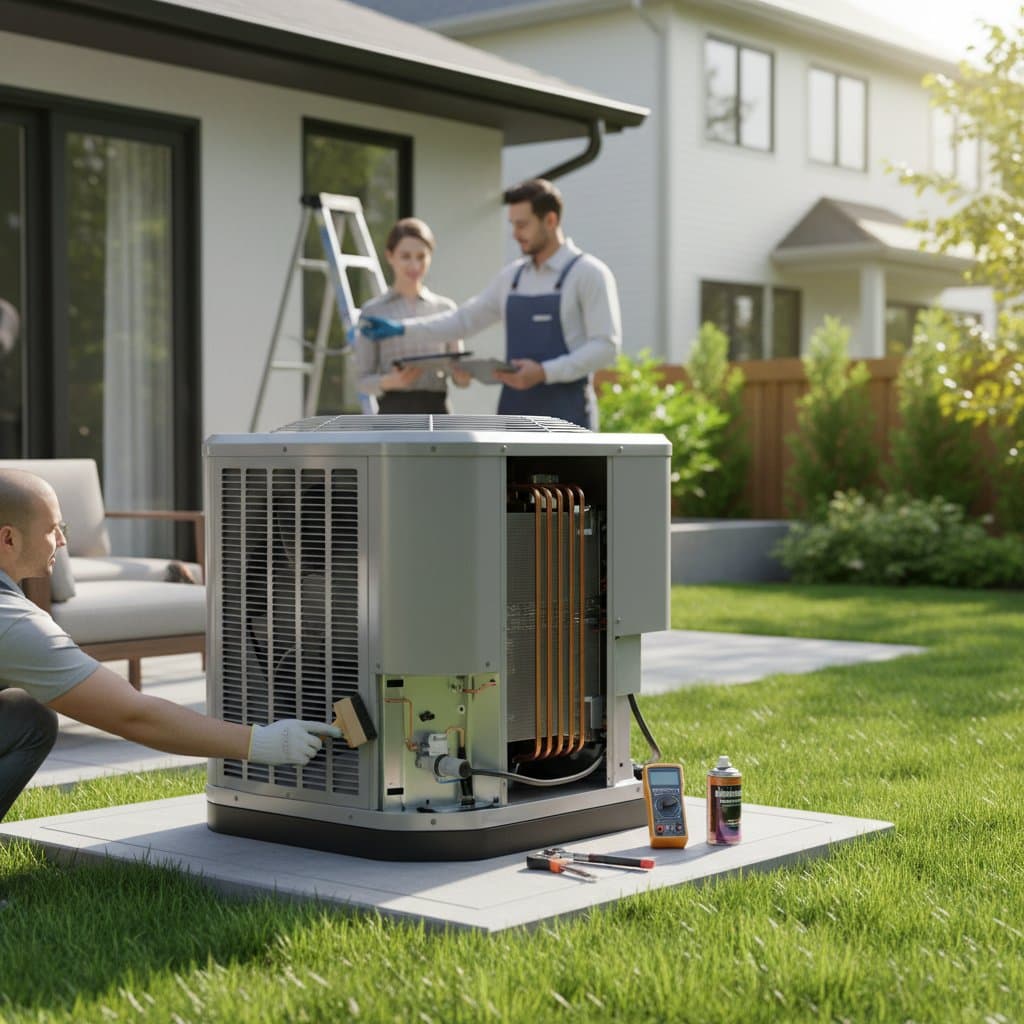Essential Summer AC Tasks to Prevent Breakdowns
Summer heat places significant demands on home air conditioning systems. Proper preparation before temperatures climb ensures reliable operation and minimizes the risk of sudden failures. Homeowners who invest time in maintenance experience fewer disruptions, reduced energy consumption, and prolonged equipment lifespan.
The Value of Pre-Season AC Maintenance
Air conditioners operate under peak stress during warm months, where accumulated dust and wear can impair performance. Neglected systems consume more electricity while delivering suboptimal cooling. Proactive maintenance optimizes airflow, refrigerant circulation, and component integrity, resulting in lower utility bills and dependable comfort.
Critical Maintenance Steps to Take Now
1. Replace or Clean Air Filters
Dirty filters block airflow and compel the system to overwork, accelerating wear on the compressor and coils. Homeowners should inspect filters monthly and replace disposable types or wash reusable ones every one to three months, based on household activity levels. Fresh filters promote better air quality by trapping allergens and particulates, while also easing the system's workload.
2. Clear the Outdoor Condenser Unit
Debris such as leaves, pollen, and grass often accumulates around the outdoor unit, restricting heat dissipation. Maintain a clearance of at least two feet on all sides to allow unrestricted airflow. Use a garden hose on a low-pressure setting to rinse the coils gently, avoiding damage to the delicate fins that facilitate heat exchange.
3. Verify Thermostat Functionality
A malfunctioning thermostat can lead to inefficient cycling or failure to activate cooling. Test the device by adjusting settings and observing response times; ensure it switches to cooling mode without delay. Upgrading to a programmable model allows automated adjustments, such as raising temperatures by several degrees during absences, which conserves energy without sacrificing comfort upon return.
4. Conduct an Early System Test
Activate the air conditioner weeks before peak heat to evaluate overall function. Run the unit for 15 to 20 minutes and check for steady cool air from vents, typically 15 to 20 degrees Fahrenheit below room temperature. Address any signs of trouble, like inconsistent temperatures, rattling sounds, or reduced airflow, through immediate professional assessment to sidestep seasonal service backlogs.
5. Clean Interior Vents and Registers
Obstructed vents diminish air distribution, causing uneven cooling and increased strain on the blower motor. Remove and vacuum register covers quarterly, using a soft brush attachment to dislodge dust from grilles. Reposition furniture or drapes that impede flow, aiming for open pathways that support balanced temperatures across all rooms.
6. Maintain the Condensate Drain Line
The drain line expels condensation formed during cooling; blockages from algae or sediment can cause overflows and water damage. Locate the line near the indoor unit and flush it monthly with a solution of one part white vinegar to ten parts water, poured slowly to dissolve buildup. Regular flushing prevents humidity spikes and protects structural elements from moisture exposure.
7. Review Electrical Components
Frayed wires or loose connections invite intermittent operation or complete shutdowns, posing safety risks. With the power disconnected at the breaker, visually inspect accessible wiring for signs of corrosion, such as green patina or exposed copper. Professionals equipped with multimeters can tighten terminals and replace degraded insulation, ensuring stable power delivery.
Indicators for Professional HVAC Service
Homeowners can handle basic upkeep, yet comprehensive diagnostics demand specialized equipment. Technicians measure refrigerant pressure, clean evaporator coils with approved solvents, and calibrate controls for optimal performance. An annual tune-up, ideally in spring, identifies subtle issues like minor leaks or imbalanced fan speeds, averting costly overhauls during summer peaks.
Concise AC Maintenance Checklist for Summer Readiness
- Replace or clean air filters as needed
- Remove debris from the outdoor unit and rinse coils
- Test and calibrate the thermostat settings
- Operate the system early to assess cooling output
- Vacuum vents and clear blockages from registers
- Flush the condensate drain with vinegar solution
- Inspect electrical connections for damage
- Arrange a full professional evaluation
(Insert image suggestion: An illustrated checklist featuring icons for each AC maintenance step, such as a filter icon for air filter replacement and a hose icon for outdoor unit cleaning.)
Achieve Reliable Cooling Through Proactive Care
Investing effort in these maintenance routines safeguards against unexpected failures and optimizes energy use. Home systems that receive consistent attention operate more quietly and efficiently, delivering even temperatures without fluctuations. With preparation complete, homeowners gain assurance in their air conditioner's ability to withstand summer demands, fostering a serene indoor environment amid rising outdoor heat.





